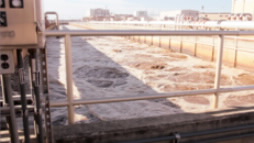FOR IMMEDIATE RELEASE | March 10, 2011
New ChemMatters video focuses on turning home sewage into drinking water
WASHINGTON, March 10, 2011 — One of the most underappreciated marvels of science — the process of transforming sewage into drinkable water — gets the well-deserved spotlight in the latest episode in the American Chemical Society’s (ACS) award-winning Bytesize Science podcast series.
The high-definition video, “How Wastewater Goes from Polluted to Pure,” is available without charge at www.BytesizeScience.com and on the Bytesize Science podcast on iTunes. Based on an article in the February 2011 issue of ChemMatters, ACS’s quarterly magazine for high school students, the video explains how the mix of human waste, food, grease, soap and other organic materials, filled with bacteria and viruses, is removed from sewage in wastewater treatment plants.
Media Contact
Michael Bernstein
202-872-6042
m_bernstein@acs.org
Michael Woods
202-872-6293
m_woods@acs.org
The final product is probably cleaner than most tap water, and safe as the safest bottled water, but it actually does not go back directly to the kitchen faucet in your home. Treatment plants throughout the United States often put fully treated water into bodies of water so that it is filtered down as rainwater via the natural process known as the water cycle.
ChemMatters has been connecting chemistry to our every day lives for the past 28 years. Published quarterly by the ACS Office of High School Chemistry, each issue contains articles about the chemistry of everyday life and is of interest to high school students and their teachers. Request a free copy of ChemMatters.
For additional entertaining video podcasts from ACS, go to www.bytesizescience.com.
- Subscribe to Bytesize Science and ChemMatters in iTunes (requires iTunes software)
- No iTunes? No problem. Check out recent episodes of ChemMatters and Bytesize Science at www.BytesizeScience.com.
The Bytesize Science series is produced by the ACS Office of Public Affairs.
###



